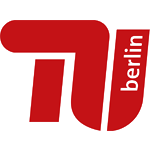Difference between revisions of "Team:Berlin/safety"
Jpalbrecht (Talk | contribs) |
Jpalbrecht (Talk | contribs) |
||
| Line 129: | Line 129: | ||
<h2>SAFETY</h2> | <h2>SAFETY</h2> | ||
<div class="teaser-text-sub"> | <div class="teaser-text-sub"> | ||
| − | <div class="col-md-12"> | + | <div class="col-md-12"> |
| + | We organized a Science Café event in the heart of Berlin (Betahouse – Coworking space in | ||
| + | |||
| + | Kreuzberg) on August 7 2015 and, hereby, provided an interface between science, research, | ||
| + | |||
| + | and art. Four presentations about different fields, including our Enzymatic Flagellulose, made | ||
| + | |||
| + | this event a very special one. We showed and discussed our projects with a language easy for a | ||
| + | |||
| + | non-scientific audience to comprehend. We focused on addressing the issue of microplastics | ||
| + | |||
| + | and the alarming threat that they represent to human health. Additionally, we talked about | ||
| + | |||
| + | how genetic engineering help us be more efficient and generate either enzymes, proteins or | ||
| + | |||
| + | products that are usually difficult to access and produce. We made a clear emphasis on the | ||
| + | |||
| + | importance of good scientific practices when it comes to handling genetically modified | ||
| + | |||
| + | organisms. Although the audience have heard about them before, some points needed to be | ||
| + | |||
| + | clarified for the public to understand that in our proceedings there is no threat to either | ||
| + | |||
| + | biodiversity, environment or human health. <br/><br/> | ||
| + | |||
| + | Moreover, we talked about how important it is to remain “inter- or trans-disciplinary” in | ||
| + | |||
| + | science. By presenting the different members of our team and their diverse academic | ||
| + | |||
| + | backgrounds we stressed the fact that solution can only be achieved through collaboration | ||
| + | |||
| + | from different fields. <br/><br/> | ||
| + | |||
| + | The audience was very happy to obtain first hand information from researchers working on | ||
| + | |||
| + | topics that concern the society and the government. The main feedback from the audience | ||
| + | |||
| + | focused on how good it is to make science accessible to the public and how important it is to | ||
| + | |||
| + | explain complex methods in a visual way. <br/><br/> | ||
| + | |||
| + | Our participation definitely clarified some points and misunderstandings. The public was invited | ||
| + | |||
| + | to visit the lab anytime and also to help us in anyway from web designing to fund raising. | ||
| + | |||
| + | |||
| + | |||
| + | <br/><br/></div> | ||
</div> | </div> | ||
</div> | </div> | ||
Revision as of 19:06, 13 September 2015
SAFETY
Thanks to
















